|
|
Apparently suddenly appointments for the second jab are being cancelled, and some parents are “distraught”.
What kind of medicine do you offer to all children aged 5 – 11 as a “one off program” with a near-secret end date?

Apparently the end was a preplanned thing, a mere footnote in February that no one noticed. Was this a premade PR “out-clause” that was there from the beginning and which could be turned off or on as it suited? If so, we have to admire the politico-marketing. If things went badly, it’s a clever way of being able to cancel the program without appearing to cancel it. “Nothing to see here Ladies and Gentlemen“. It’s just a footnote clause that doctors didn’t know about.
Presumably, if there were no issues of concern they would have quietly extended the program.
Tom Bawden, inews
“In a document published on its official website in February, the Government said that the current vaccine project for five to 11-year-olds would be a “one-off pandemic response programme”.
But it only in a footnote did it point out that there would be a cutoff point of September 1: “This one-off programme applies to those currently aged 5 to 11, including those who will turn 5 years of age by the end August 2022.””
The Government insists its advice has not changed, but scientists said that mentions of a time limit would come as a shock and a disappointment to many parents of children coming up to five as very little appeared to have been done to communicate the cut-off with them.
But now at least one professor is very concerned that children turning 5 will have to wait seven years now to be eligible for their first shot.
“The advice hasn’t changed but they stuck the time limit in a footnote. And clearly it has come as a surprise to parents,” said Professor Christina Pagel, of University College London.
“It may only be a small number of people who are affected right now. But it’s quite a shock to the parents who were trying to get their kids vaccinated to find out they can’t now get it for seven years. That’s quite a big deal,” said Professor Pagel.
It must have been a surprise to doctors too, if they were accepting bookings that they had to suddenly cancel.
As one doctor points out the government has made much of it being a personal choice to get vaccinated, but this effectively removes parental choice.
Resistance is growing — even on Twitter:
That twitter thread has many readers (or apparent readers) saying they were shocked by the decision: “is vaccine tourism a thing” — asks one, worried about her four year old that has missed out. Another says without any irony “Thx for posting this! My 8 year old has had one jab and covid last month and was very unwell despite the reports of it being mild in kids — gutted he won’t get No 2!” — But ultimately most of the responses are sarcastic, apart from the Prof herself who thinks they should still get number 2…. to which in turn, another tells the Prof she is replying to a bot. Another says “do bots have children?”
And TheRaticalLife asks if Professor Pagel is the same Christina Pagel as listed on the WEF website.
Igor Chudov was one of the first to report the change: UK BANS Covid Vaccines for ALL kids under 12
I am guessing that the British authorities are becoming more aware of the public disappointment and the looming specter of criminal liability, and are backpedaling on the vaccines quietly.
h/t David Archibald, Scott of the Pacific, John Connor II
Photo by Hakan Nural on Unsplash
9.9 out of 10 based on 61 ratings
10 out of 10 based on 7 ratings
by Jo Nova
Decades ago we knew that vaccines carry risks that can’t be tested in a three month trial, or even a two year trial. Just ask Anthony Fauci…
@MirandaDevine
Anthony Fauci on the AIDS vaccine in 1999:
“You take it and then a year goes by and everybody is fine. And then you say, okay that’s good, now let’s give it to 500 people, and then a year goes by and everything is fine. Well now let’s give it to thousands of people and then you find out that it takes twelve years for all hell to break loose and then what have you done?”
 Australian Health Practitioners Regulatory Authority Doctors and our Medical agencies should have explained this risk
There may be a legal route for vaccine victims to fight back.
We always thought the Doctor-Patient relationship was sacred, and “informed consent” meant that doctors told the whole truth, and gave their honest opinions. In Australia that was blown out of the water when the TGA banned cheap safe drugs and AHPRA deregistered, suspended or just threatened doctors who spoke their minds. But perhaps there is a legal path open to victims of vaccination.
I’m no legal expert, but at the Covid Inquiry 2.0 on August 17, at least one lawyer argues that all along, Australian doctors were required to observe their code of conduct, no matter what threatening letters their regulatory authority issued (AHPRA). Indeed Jullian Gillespie argues that the AHPRA statement in March 2021 was illegal. That means if doctors failed in their duty to inform patients of the risks, the highly experimental approach or potential adverse outcomes, patients (or their loved ones) might be able to take action against their doctor. Their doctor (sandwiched horribly in the middle) may be able to, in turn, take action against the agencies that intimidated or harassed them. It’s a legal quagmire, but it might slow the trainwreck, and push that accountability button… and someone needs to take responsibility for what were abominable decisions.
It could potentially include thousands of medical professionals so we can expect the powers that be to protect the billion dollar interests as they have all along. “Say Hello Serf to your new Head of State Mr Pfizer?” None of those secret contracts served Australians. There will be big forces ready to protect the agencies that made favourable decisions.
We in the West all thought we understood what our doctors priorities were, and what our Minister of Health was supposed to care about.
Malcolm Roberts has been a very busy man. Great to see Craig Kelly in there too.
…
Full transcript.
h/t to Tides of Mudgee and David of Cooyal.
Some excerpts from lawyer Jullian Gillespie:
The infamous AHPRA March 2021 statement that threatened and coerced and gagged practitioners under threat of regulatory action had no legal basis nor merit.
Keep reading →
9.3 out of 10 based on 85 ratings
10 out of 10 based on 7 ratings
By Jo Nova
A new study of 8,300 people shows that taking ivermectin regularly before catching Covid halved the odds of catching it, and reduced mortality by a seismic 92%*. It reduced hospitalization by 98%, and in a dose dependent manner. If unvaccinated people were threatening our hospital system, it was only ever because they were denied ivermectin, something that appears to have increased their odds of dying by 12.5 fold. And as we all know now, the Emergency Use Authorization for the new, barely tested, radically different vaccines depended on there being no safe cheap alternative, which clearly there was. This study took place from July 2020 — Dec 2020. So here we are two years after it started. So many people died who didn’t need to.
This study follows up on the large trial in Itajai, Brazil to see if regular use of ivermectin would work better than the bizarrely low doses which still cut hospitalization in half, and reduced deaths by 70%. In that study, people were asked to take the 0.2mg/kg/day dose two days in a row but only once every two weeks. Since the half-life of ivermectin in humans is only 12–36 hours, those taking it in the study were effectively left unprotected at least half the time. It still seems strange, but even the regular users in this study were only taking ivermectin for two consecutive days every two weeks.
In the new study 8,300 people took ivermectin regularly, and they were compared to 45,700 people who didn’t and 33,000 irregular users. It’s not a randomized trial, so it’s quite possible that regular users were smarter, more conscientious and took more care to avoid catching Covid. Countering that, it turns out that those at known higher risk were also more motivated to use ivermectin regularly — they were older and more likely to be diabetic (type 2) or suffering from high blood pressure. Thus they should have been more likely to die, but ivermectin saved them.
Even irregular use of ivermectin was still a lot better than none at all, but — and it’s hardly surprising — regular use of ivermectin preemptively was the best.
*In a propensity matched sub-group comparing 283 non-users with 283 matched regular users.
h/t Charles.
UPDATED: The wonder drug that disappeared
If you only email friends one link — make it this story. It’s the biggest medical scandal since 1850— Why is a cheap safe drug being actively surpressed– because it threatens the Emergency Use Authorisations for all experimental vaccines, an industry worth around $100 billion. The Australian TGA admitted it banned the safe drug because people might not get vaxxed. Pfizer and other companies would be crazy, nutso, bonkers, and doing their shareholders a disservice if they did not lobby, cajole, scare, smear and call in all their favours to make sure there would never be a cheap safe alternative.
In desperation, some Americans are going to court to get rulings to order doctors to use Ivermectin on their loved ones. One family hired a helicopter to take their mother away from intensive care in a hospital that refused to give Ivermectin and saved her.
Ivermectin is so safe doctors fed it to primary school children to treat lice in Canberra. It has been used to virtually eliminate Covid in Japan, Uttar Pradesh, and in Indonesia where it cut Covid by 98% at the same time cases in Australia grew 500% with Lock-n-Vax. There are also success stories from Peru, Brazil, and Mexico.
For peer reviewed studies read: The BIG Ivermectin Review: It may prevent 86% of Covid cases. In vitro, Ivermectin reduces viral loads 5000 fold in 48 hours. There are no less than 73 studies involving 56,000 people that show improvements in over 80% when used prophylactically, 67% when used early and even as many as 40% with late-started treatment. There are 20 known mechanisms of action: IVM binds to ACE2, the spike, and TMPSSR2, it is a zinc ionophore, it binds to a protease the virus needs, prevents key viral proteins getting into the cell nucleus which would normally allow the virus to shut down interferon signalling to warn neighboring cells. It’s anti-inflammatory, it blocks the NF-κB pathway, which will reduce Akt/mTOR signalling, which inhibits PAK1 which reduces STAT3 and IL-6. STAT3 induces C-reactive protein (or CRP). It’s impossible for Covid to mutate around all these mechanisms at once. No leaky vaccine should be given without an anti-viral because it risks the mutation of a nastier virus that escapes our immunity. Read the horror of Marek’s disease in chickens. 50 years of leaky vaccines created a disease worse than Ebola. It’s 100% fatal in ten days for unvaccinated chickens.
The FDA and others will say that Ivermectin was no help in the TOGETHER trial, but that trial was designed to fail. People were given low doses on an empty stomach when it wouldn’t be absorbed. And why are other drugs like Remdesivir approved with only one trial and iffy results? Ivermectin is so safe some 3.7 billion doses have already been used around the world. The inventors won a Nobel Prize for its discovery in 2015. By July 2021 there were already signs Ivermectin could save as many as 50%. Why were large trials not started then? The UK “Principle” trial was also designed to fail from the start — signing up people up to 15 days after they tested positive.
Why are all the vaccine contracts secret? Say hello Serf to your new Head of State, Mr Pfizer?
REFERENCE
Kerr L, Baldi F, Lobo R, et al. (August 31, 2022) Regular Use of Ivermectin as Prophylaxis for COVID-19 Led Up to a 92% Reduction in COVID-19 Mortality Rate in a Dose-Response Manner: Results of a Prospective Observational Study of a Strictly Controlled Population of 88,012 Subjects. Cureus 14(8): e28624. doi:10.7759/cureus.28624
9.8 out of 10 based on 106 ratings
7.8 out of 10 based on 9 ratings
The Nord Stream 1 gas pipeline from Russia to a desperate Europe was supposed to re-open yesterday, instead, Russia announced that it will remain closed due to an oil leak, indefinitely. The announcement was made after markets closed. Germany has about 3 months of gas in storage.
Gas prices are expected to rise Monday.
By Robert Plummer & Oliver Slow
BBC News
Faisal Islam, the BBC’s economics editor, described the indefinite closure of Nord Stream 1 as a very serious development, noting that Russia had kept supplies into Europe flowing even at the height of the Cold War.
The stand-off with Russia has forced countries to fill their own gas supplies, with Germany’s stores increasing from less than half in June to 84% full today.
Apparently this is the oil spill that shut down a billion dollar pipeline:
 Just bad luck then? Twitter commenters have some doubts:
@PolemicTMM –– Masterful trolling of the EU by Mr P.
@PrivatinvestN — Is this a Friday night joke or have they actually published this?
@JavierBlas — They did. Obviously, all pretences are gone.
@NathanEYates — Looks like a coffee spill.
@vulcanhammer –– You’ve obviously never had Russian instant coffee. You would then understand why the pipeline is closed.
Jokes aside, Javier Blas warns — “it’s down for good”
Gazprom seems to imply here that the only operating turbine at Nord Stream 1 pipeline can only be repaired now at one of (overseas) Siemens Energy specialised workshops, and until that happens, the pipeline won’t re-start (in other words, it’s down for good)
Seimens says that the leak should not stop the operation of the pipeline.
““… we have already pointed out several times that there are sufficient other turbines available at the Portovaya compressor station for Nord Stream 1 to operate,” Siemens Energy said.“
Looks like another move in the energy wars which didn’t have to be this way.
If only Europe had an energy policy that wasn’t designed by teenage girls.
9.8 out of 10 based on 104 ratings
8.6 out of 10 based on 10 ratings
Hoping to change the weather has consequences, and so does printing lots of money:
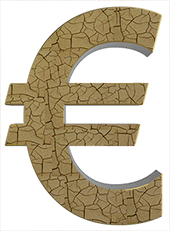 In the UK they’re being told they might have to avoid using appliances at home from 2pm-8pm this winter and cook dinner after that (your circadian rhythm be damned). Who wants to tuck the kids in without a hot meal? Energy prices are so high pubs are already closing early. Nearly one in four households in the UK say they are planning to not turn heating on this winter because they can’t afford it (and that was before the latest shocking price rise). In a taste of things to come, people are starting to be admitted to hospital because their energy was cut off. The NHS is asking hospital staff to turn of equipment and lights and warns that care may even have to be rationed because of soaring energy bills. People with electric cars may be asked not to charge them til after everyone has cooked dinner. It’s complicated saving the world. In the UK they’re being told they might have to avoid using appliances at home from 2pm-8pm this winter and cook dinner after that (your circadian rhythm be damned). Who wants to tuck the kids in without a hot meal? Energy prices are so high pubs are already closing early. Nearly one in four households in the UK say they are planning to not turn heating on this winter because they can’t afford it (and that was before the latest shocking price rise). In a taste of things to come, people are starting to be admitted to hospital because their energy was cut off. The NHS is asking hospital staff to turn of equipment and lights and warns that care may even have to be rationed because of soaring energy bills. People with electric cars may be asked not to charge them til after everyone has cooked dinner. It’s complicated saving the world.
In Europe, the gas storage is nearly 80% full which would cover Europe’s energy use in a normal winter for about three months. But half of Europe’s aluminum and zinc smelters have already shut down. In Germany fights are breaking out on the coal shop floor to get coal. In Scotland and Italy people are burning their energy bills in the streets in protest.
[DailyMail] Experts warn energy rationing this winter could see people told not to cook until after 8pm, pubs close at 9pm, ‘three-day-a-week’ school, care homes cancel outings for residents and swimming pools left unheated
The scale of energy rationing that may be required at home, in the NHS, schools, care homes, shops, pubs and on the streets of Britain because of surging energy prices and the threat of blackouts is laid bare today. Experts have told MailOnline there is ‘no escape’ for the 66million people in the UK who will be encouraged to cut their use of gas and electricity this winter and even turn off the lights when the wind drops.
Kathryn Porter, from consultancy Watt-Logic, fears that the crisis will cost lives…
Do British Lives Matter?
[MSN] Patients are being admitted to hospital after having their gas and electric shut off, an NHS chief has told the energy regulator.
The health boss has asked the national regulator for gas and electricity markets to reconsider the policy of disconnecting supplies as it will “save lives” this winter.
[DailyMail] NHS treatment may have to be rationed this winter because of ever-increasing energy bills, health bosses fear in the face of a mammoth backlog and crises in the A&E and ambulance sectors.
He [Rory Deighton, of the NHS Confederation] said the solution ‘will either have to be made up by fewer staff being employed, longer waiting times for care, or other areas of patient care being cut back’.
Analysts predict the health service will need at least another £4billion to account for spiralling costs.
That can’t be good: Germany’s industry is experiencing a “structural rupture”:
Michael Bastasch, The DailySignal
“It’s not good news,” German Economic Minister Robert Habeck said Wednesday of his country’s plight. “[I]t can mean that the industries in question aren’t just being restructured but are experiencing a rupture—a structural rupture, one that is happening under enormous pressure.”
This rupturing of industry is being felt across Europe. Europe’s already lost at least half its ammonia production and one-third of its nitrogen fertilizer production due to sky-high gas prices, according to industry analysts. Ammonia and nitrogen fertilizer are both derived from natural gas using the Haber-Bosch process.
Likewise, Reuters estimates roughly half of Europe’s aluminum and zinc smelters have shut down. Russia’s decision to once again halt gas supplies, this time for three days, will no doubt convince more factories big and small to shut their doors.
Benny Peiser, director of Net Zero Watch, is more pessimistic. He sees long-term de-industrialization as a serious risk …
James Warrington, The Telegraph
Eurozone inflation hits new record, with Putin continuing to slash gas supplies to the Continent.
Prices are rising at the fastest rate since records began in 1997, piling pressure on the European Central Bank to continue raising interest rates at its meeting next week.
Now that’s a hockey-stick that matters:
9.5 out of 10 based on 85 ratings
7.9 out of 10 based on 9 ratings
It’s like a team of obsessive compulsive scientists turned up to capture a magic show in slow-mo
They descended on Palmyra Atoll in 2009 and kept going for ten years, taking 1,500 photos across eighty plots of corals. They looked at all the living things on the ocean floor, and not just the hard corals, but the algae, the microalgae, and the turf. They followed plots where waves crashed and plots that were calm. Then they went through the photos with detailed digital-tracing and image analysis and tracked them — not just through one, but two full bleaching cycles and what they found was recovery. Stability!
In May this year their 10-year study of Palmyra Atoll was finally published
Palmyra is an isolated atoll, 1,300 km south west of Hawaii, with a tiny population. It’s about as pristine as anything can get, unaffected by human pollution, except of course, for CO2 — that fertilizer from the sky which is everywhere. If it was a problem, this was a good place to find out.
In 2015 a savage pool of warm water arrived that bleached not just ten or twenty percent of the corals but blitzed right through ninety percent. It must have looked like a graveyard. But one year later, only 10% had actually died. Within two years the reef was restored to “pre-bleaching levels”. It’s almost like reefs have been doing this for millions of years. Like corals are the tropical weeds of the ocean?
Even the researchers can’t contain their relief. The study authors are describing it as a remarkable recovery, one which gives everyone hope. It’s couched in the qualifier that this happened in an untouched wilderness, and that reefs closer to fertilizers, fishing and man-made pollution don’t start from such a high point and aren’t as well equipped to deal with trouble. They may have a point, but the study puts a big hole in the idea that rising CO2 is killing coral reefs already. After all, the CO2 was there before, during and after the bleaching and getting higher every year — inasmuch as it caused death, it also caused recovery. The reefs were fine.
The most important point is that reef systems are resilient, and that bleaching is not necessarily a big deal.
Thanks for the tip to Graham Young of the AIP
I’m sold. Can anyone get me tickets to Palmyra?
Steven Koppes, Scripps
The largest global coral-bleaching event ever documented struck the world’s oceans in 2014 and lasted until 2017. The onset of this abnormal whitening condition spawned widespread gloom-and-doom news reports about its calamitous effect on Australia’s Great Barrier Reef and more general predictions of coral reef extinction by 2050.
But a new 10-year study from Palmyra Atoll in the remote central Pacific Ocean shows that reefs outside the reach of local human impacts can recover from bleaching.
“One year after each bleaching event, we did see signs of coral decline at some of the sites, but within two years this was restored,” said Adi Khen, a Scripps Oceanography PhD candidate and lead author. The research team of current and former members in marine ecologist Jennifer E. Smith’s laboratory saw only a small net change in the reef’s coral and algae populations after a decade. Khen, Smith and four co-authors published their results in the journal Coral Reefs.
“During the warming event that occurred in 2015, we saw that up to 90% of the corals on Palmyra bleached but in the year following we saw less than 10% mortality,” Smith reported.
Even the researchers were relieved and enthused:
Bree Steffen, August 5
“I think most people are really fatigued and frankly kind of given up on the ability to do anything to save coral reefs or other marine ecosystems,” Smith said. “And so to have a case study where we can see that the reefs on Palmyra today probably looked the same way they did, you know, several decades ago or even a century ago. Even when it gets hit with a warm water event, there are impacts, but those species and the individuals that are there are able to recover really quickly.”
It’s a bit obsessive compulsive, but what good scientist isn’t?
They took 1,500 photos of the same reefs to keep track of the changes, and then someone had to squish them all together. 🙂
 1,500 photos of the same reefs were taken to keep track of the changes. Abstract
Keep reading →
9.8 out of 10 based on 68 ratings
8.8 out of 10 based on 10 ratings
The Witches and Warlocks of The Australian Academy of Science are worried. Even though the evidence is overwhelming and settled, climate denialism is spreading. This is particularly perplexing because climate believers have unlimited access and free advertising in the media, and millions of dollars in government support. Despite all that, Australians must be too stupid and badly educated to recognise the True Weather Prophets that live at the Martian Embassy in Canberra and so they have given up trying to persuade the idiot voters. The new genius plan is to get the tech Tyrants like Twitter and TikTok to shut down Australians who ask impertinent questions or talk about the solar wind, the 1809 Windsor Flood or the 1852 Fires and other blasphemies!
Thou Shalt Not Question the Sacred Guild of Science Heads!
I thought they might want a new logo to reflect their true heritage:
 Thanks to Tony Thomas for putting on the Hazmat suit and wading through the brew of petty namecalling and mangled English of what once was a society of great scientists. Thanks to Tony Thomas for putting on the Hazmat suit and wading through the brew of petty namecalling and mangled English of what once was a society of great scientists.
Tony Thomas, Quadrant Magazine
In a move unprecedented in the democratic world, the Australian Academy of Science is lobbying the tech giants Meta (Facebook), Twitter, Google, Microsoft, Apple, Adobe and TikTok to censor and harass any Australians who circulate what the Academy insultingly labels “climate denialism misinformation”.[1]
Get ready to be inoculated…
It wants the Big Tech giants to “inoculate” Australians against critics of alarmism by “actively promoting reliable, peer-reviewed and appropriately labelled material from trusted sources,” presumably the Academy and its followers. “These positive measures should be in addition to measures to reduce the spread of disinformation.”
The Orwellian agenda is in the Academy’s public submission to the tech giants’ 2022 review of the Australian Code of Practice on Misinformation and Disinformation.
The Code currently excludes professional news content that is published under a publicly available editorial code, except where a platform determines that specific instances fall within the scope of disinformation. However, some Australian news outlets are havens for climate science misinformation (Lowe, 2018) – so this exclusion undermines the ability of the Code to guard against such denialism.
This exclusion allows climate science denialism and other misinformation to flourish….
Which exclusion? That would be “Professional News Content”. The AAS wants to stop the free press from assailing its members with questions that make them look like pork chops. Won’t every industry want that? Coming soon, don’t question the PM?
And how do we determine what is professional news and what is climate denialism? Easy, the magic industrial filter of peer review. To get someone banned, all we need is for a left wing extremist academic to published a paper exposing some dark “haven” (their word, not mine). Then voila, the journalists in the haven can be declared an enemy of the clouds, or a threat to the pigeon-toed frog, and must be thrown in the dungeon. See how this works? We might as well throw people in a pond and see if they float? It’s quicker.
Once-upon a time the AAS had esteemed scientists. If there are any left they had better speak up while they still can. The Great Garth Paltridge has:
“I just cannot understand how any science academy that is supposed to operate through rational debate can behave like this – that is, to use pure political brute force to prevent one side of the argument from putting its case.”
SkyNews is clearly the main target now, but Tony Thomas presumes they have plenty of targets:
It’s curious that Rita Panahi is the only ornery Australian individual actually named in the Academies’ submission and citations. The major damage to the Academies’ catastrophism is being done by Andrew Bolt on Sky, Chris Kenny in The Australian, the Spectator (Australia), Joanne Nova’s world-ranked sceptic blog, the Institute of Public Affairs’ bulletins and speakers, Tim Blair’s blog for the Daily Telegraph (sadly, paywalled), Senators Malcolm Roberts and Pauline Hanson, the Nationals’ ex-Minister Matt Canavan and ex-PM Tony Abbott, famed for calling climate science “absolute crap” and likening climate scientists – presciently – as “thought police”.
All this sceptic output is re-cited and re-published on social media. Clearly the Academies would be delighted to see the media giants slapping “Misinformation!” and “Code Violation!” labels on it, cancelling accounts, as LinkedIn has being doing to US sceptics, and down-ranking the material to oblivion on search engines.
— Read it all at Quadrant
I defy the Academy of Witches and Warlocks of Science to define “climate denialism” in meaningful english — because it won’t turn out to be people who deny we have a climate will it? We all know that “climate deniers” are really the people that deny that a foreign UN committee, or a computer model has a hotline to God.
 Anna-Maria Arabia The head of The Science Academy is Anna-Maria Arabia, who spent five years advising Labor politicians, and has been calling for legislation to silence climate skeptics since 2011, so it’s not like she is a political animal with a bias dropped in to milk a brandname built over the last seven decades.
Dear 589 Fellows of the AAS: If it means anything to have a Fellowship, if you care about science at all, it’s time to find a backbone. Ms Arabia is using your work to push her own agenda.

h/t Old Ozzie, Johnny Rotten
9.9 out of 10 based on 132 ratings
7.2 out of 10 based on 11 ratings
In a surprise to no one, descendants of plants that survived 350 million years of climate extremes, volcanoes, meteor impacts, mass extinction events and ice ages seem able to cope with moderate modern weather. Not only that, places where the weather varied a lot in the 1960s are still like that, and the plants that liked those conditions still like those conditions. I mean, really, give me your money.
Does this mean we can protect forests of the future by creating climate variability now?
Rachel Harper Institute of Physics
 Close relatives of Ginkgo Biloba trees have been around for nearly 200 million years. | Photo Jean-Pol Grandmont | A new study out today in the first issue of Environmental Research: Ecology assessed effects of past and current climate variability on global forest productivity. The work highlights sensitive regions where forests may be most at risk as the planet warms and temperatures become more extreme. The framework can help set conservation priorities, support forest adaptation efforts, and improve carbon accounting.
Lead author Winslow Hansen, a forest ecologist at Cary Institute of Ecosystem Studies, says that “global climate patterns are becoming increasingly variable. This means more extremes, which threaten forest health and productivity. They say adversity makes you stronger. Here, we were essentially testing that adage for trees. Are forested regions that experienced more variable conditions in the past better prepared to tolerate variable climate now and in the future?”
Get ready — places that used to have variable weather, still have variable weather, and the plants that live there tend to be the ones that don’t get killed by variable weather:
They found that regions where temperature was more variable in the past continue to experience more temperature variability today. Forests in these regions tend to better tolerate this increasing variability.
Hansen says that their “findings show that historic temperature variability casts legacy effects on current forest productivity. In places where historic temperature variability was 0.66°C greater than the global average, forests were 19x less sensitive to current temperature variability. This trend was true globally, with important distinctions among biomes.”
Someone needed a study to show this?
Meanwhile, in things we have known for decades: Sometime around 360 million years ago plants got very good at sucking CO2 out of the sky and they never looked back even though temperatures varied by 7 to 15 degrees Celsius. Tell the children…
 Geocraft — Late Carboniferous to Early Permian time (315 mya — 270 mya) is the only time period in the last 600 million years when both atmospheric CO2 and temperatures were as low as they are today (Quaternary Period ). Temperature after C.R. Scotese. CO2 after R.A. Berner, 2001 (GEOCARB III)
REFERENCE
Winslow D Hansen et al, Global forests are influenced by the legacies of past inter-annual temperature variability, Environmental Research: Ecology (2022). DOI: 10.1088/2752-664X/ac6e4a
10 out of 10 based on 64 ratings
9.3 out of 10 based on 15 ratings
A new paper shows in Germany excess deaths seem to mysteriously hit the working age crowd harder than the old and the young in 2021, which defied the textbooks, and also broke the pattern set in 2020. The Delta variant arrived in 2021 with a higher mortality rate but that still doesn’t explain the strange age pattern. In 2020 Germany had about 30,000 deaths officially due Covid, which rose to 80,000 deaths in 2021. But something else was going on because Covid doesn’t hit working age people harder than senior citizens.
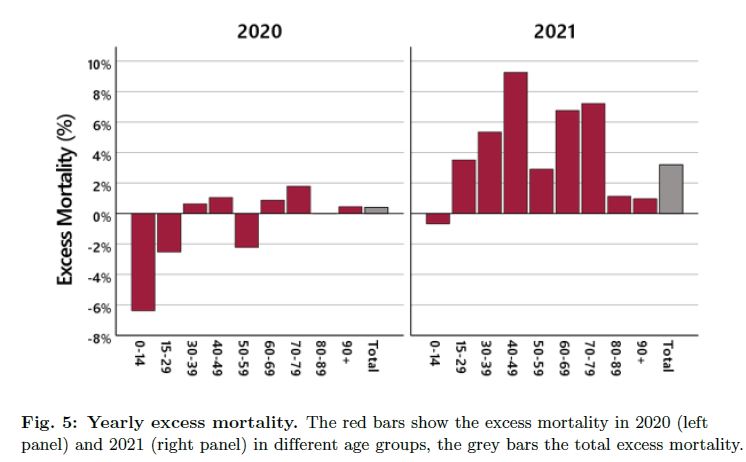 Viruses usually kill the very young or the very old, not the people in the middle. This sort of actuarial data is notoriously complicated to unpack. But there is a clear rise in unexpected deaths at the same time as the medical experiments that also peaked in April, June, and December of 2021. As Kuhbandner and Reitzner point out, excess deaths appear to rise with the timing of vaccination doses, especially the first and the third.
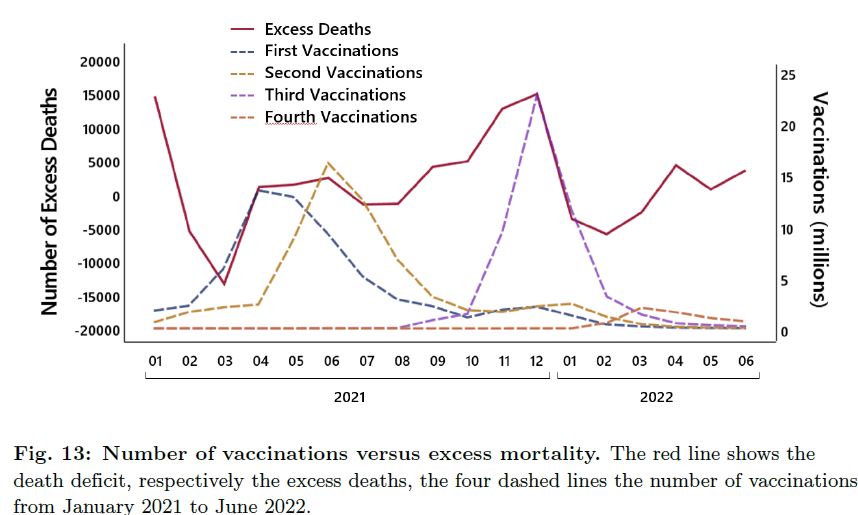
Furthermore, peak vaccinations for the under 30s was delayed til June, which is when their excess deaths peaked
For most of the first year and a half of the pandemic the excess mortality in the youngest cohort aged 0-29 was so low it was negative. They died less often than expected. But their vaccination program didn’t peak until June 2021, which was the same month that excess death in young people rose to 13% higher than expected (see table 8.5 in the paper).
Wrapped under those numbers are the awful losses of people taken far too young. Of families with empty spaces that can’t be filled. Where are the government reports and the media grillings for starters?
This fits with data we saw from the UK in December last year
The German graphs look eerily similar to the Neil and Fenton et al study in the UK:
 Strangely, the unvaccinated are more likely to die a couple of weeks after their cohort gets their first dose of the vaccine? The Neil and Fenton study would still be my Go-To study for the cause-effect link. It was more detailed, had higher resolution data and could be analysed in ten year age-grouping. It had vaccination rates and dates for each group and on a high resolution weekly spacing where the lags after vaccination rates peaked were spookily clear. (Remember that in the UK data people don’t count as “vaccinated” until two weeks after their injection, and so we see the mortality peak hit the “unvaccinated” people hardest just after vaccinations peaked in their age group. It was kind of like a quantum entanglement effect in medicine.)
Most lamentably, what this really means is that the German data is just confirming what we’ve known all along now since before Christmas. Namely that there was something very risky potentially about that mass medical experiment. But the government hasn’t put a halt to it. The drugs were not withdrawn. Warnings were never issued and nobody even bothered to just raise a red flag and make sure everyone knew what happening.
Stillbirths up and fertility down?
For most of 2021 there were possibly 100 more stillbirths each month than might have been expected based on data from 2019 and 2020. There was a definition change in stillbirths data in Germany in 2018, so these are only three year trends — and a bit too short to be meaningful. It works out to about a 10% rise, but (thankfully) only a tiny fraction out of nearly 200,000 live births each month.
What’s more concerning is that total births fell by 15,000 or so in Quarter one of 2022, which would be nine months after the vaccination campaign began.
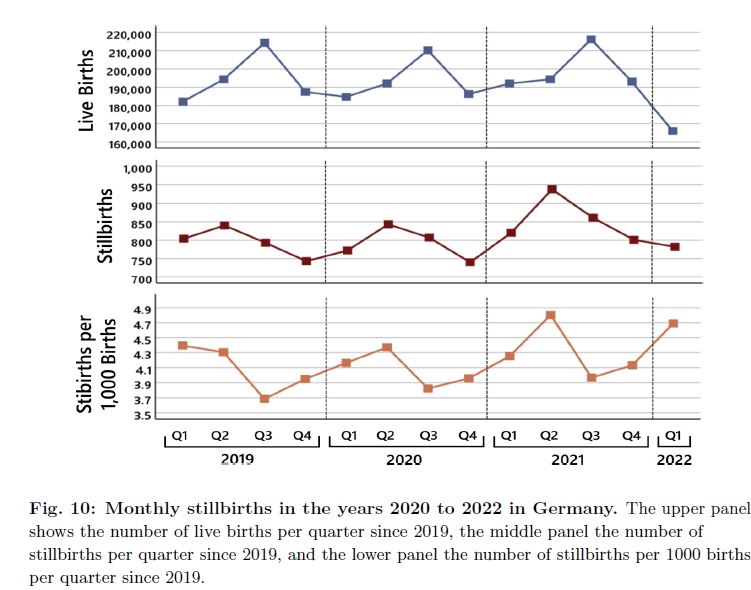 …. Here’s hoping that is just a temporary drop.
REFERENCE
Christof Kuhbandner and Matthias Reitzner (2022) Excess mortality in Germany 2020-2022.See ResearchGate, https://www.researchgate.net/publication/362777743
10 out of 10 based on 65 ratings
9.2 out of 10 based on 16 ratings
The UK “Price Cap” and forecast keep outdoing even the worse case scenarios, but finally the crisis is so calamitous that the UK Conservative Party are even talking of allowing fracking.
As the Wall Street Journal puts it: Household energy bills were expected to rise 40% this autumn, but on Friday the government regulator announced they’ll leap 80% in a single bound. (Who would have guessed that socialist price fixing would fail to cap the price?)
The current energy costs have just risen again, now “capped” at £3,549 per household, a horrible $4,200 USD or $6,000 Australian. But the future cap is headed for the mesosphere boundary layer at a shocking £7,000 by April. It’s so blisteringly bad that it’s being described as “worse than the GFC” in terms of its impact. It’s so bad, two out of every three Pubs say they are likely to close this winter, with the “monster hikes” to energy prices. That’s despite the Christmas season rush, and hopes that it will be finally free of Covid restrictions. The whole social care system is using the word “collapse” given that the price of a care bed will rise by seven fold thus wiping out their profit margins. It’s only a half a million bed industry…
At this rate there are estimates “half of British households could slip into energy poverty ” in less than six months. (Presumably someone will have to change the definition of “poverty” or it will be a real crisis.)
UPDATE: Things are finally so bad that the PM-in-waiting, Liz Truss, has said she will lift the Fracking Ban. Wow. It’s probably not a coincidence it happened on the same day the shocking new price rises were announced. One fracking company even say they could be pumping gas by January (if given a license immediately). But this move could signify hope that the NetZero serpent will lose some venom. If the UK starts fracking soon and discovers that houses don’t collapse in earthquakes and there are no rivers of fire, it will be impossible to put this genie back in the bottle.
h/t to NetZeroWatch
Look at those prices lift off
Daniel Martin, The Telegraph
“We are in a national economic emergency,” Mr Zahawi said. “This could go on for 18 months, two years, if Putin continues to use energy as a weapon.”
Dear Mr Zahawi, Putin has been using energy as a weapon for decades and you have only just noticed. Putin didn’t force Britain to stop fracking gas and build windmills, he just paid green groups to trick you into it...
The Quickening is here. Things are suddenly already at the point of second level consequences where the whole of the economy starts to unravel. There is now an expectation that small businesses will go bankrupt over winter so that means the energy companies are demanding small businesses pay steep deposits in advance for energy, which will break some of those businesses sooner.
Wall Street Journal
And that’s merely what households will spend directly on energy. Britain is also in the grip of an energy-price crisis for businesses, whose rates aren’t subject to a cap. Some small businesses report they can’t get any utility to supply them without paying a steep deposit up front, because energy companies are concerned that high prices will push more small firms into insolvency.
To adapt Hemingway, net zero drives you bankrupt gradually, then suddenly.
Worse than the GFC:
UK Household Energy Bills Will Triple On New Price Cap
Irina Slav, OilPrice
“The impact to society will be higher than the 2008 crash in terms of the impact on households,” James Cooper, partner at consultancy Baringa, told Bloomberg a day before the Ofgem announcement. “We’re now moving into territory where a majority of households are placed into debt or a very fragile financial position.”
Earlier this week, French utility EDF warned that as many as half of British households could slip into energy poverty by the start of 2023.
All profit margins in the care sector are wiped out by energy price increase which makes the 450,000 bed industry “insolvent”. Presumably these sort of calculations apply to many industries and prices will rise accordingly. Energy inflation will become CPI inflation:
The entire social care sector faces collapse in the wake of soaring energy bills with the cost of running care homes rising tenfold, experts warned.
The chief executive of Care England said providers faced a staggering 683 per cent increase in energy costs during the past 12 months, with bills expected to rise again early next year. For gas and electricity, the costs were £660 per bed, per year, this time last year; this week, care providers have to pay an astonishing £5,166.
With research from the Centre for Health and the Public Interest (CHPI) estimating the sector’s total pre-pandemic profits before tax, rent payments, directors’ remuneration and repayments on loans at £1.5bn per year, and the rise in energy prices will eradicate profit margins generated across the sector, driving many providers into insolvency and eliminating scope for investment.
Real change coming — Fracking ban to lift soon?
There is hope.
Tom Witherow, DailyMail
Liz Truss will end the ban on fracking as part of a plan to make the UK an ‘energy-secure dynamo’, she writes in the Daily Mail today. The Foreign Secretary said Britain cannot be ‘held hostage’ by authoritarian regimes and must end its reliance on foreign imports within a decade.
She pledged to win the support of local communities for fracking by ‘ensuring’ they see the benefits, and said new projects will only go ahead if there is a ‘clear public consensus’ in their favour.
It came as one fracking company in the North of England claimed, in a letter to the Treasury, that it would be likely to be able to inject shale gas into the energy market by January if it were granted a licence immediately.
Support for fracking has grown as soaring gas prices have hit household budgets, with Tory members voicing their support for new drillings in leadership hustings.
A mining engineer, speaking at the hustings in Manchester, said: ‘You cannot run, you cannot grow, you cannot progress a modern economy without a secure supply of cheap, abundant, readily available energy. ‘Right below our feet is the largest energy bonanza this country has ever discovered, bigger than coal and bigger than the North Sea.’
Most of the other solutions on offer by UK politicians involve printing more money, not finding more energy:
Mr Zahawi [UK Chancellor of the Exchequer] has drawn up a menu of options for the next Prime Minister amid calls from Ofgem for urgent help. Options under consideration include freezing the price cap as suggested by Labour, increasing benefits, handing extra support to small businesses and a loan scheme for suppliers that could shave £500 off bills.
As we discussed a few days ago, printing money from nothing is what got us into trouble in the first place, creating inflation, feeding sharks and corruption and punishing prudent savers.
The Government can “cap prices” but someone somewhere always has to pay the bill.
9.9 out of 10 based on 104 ratings
9.9 out of 10 based on 15 ratings
|
JoNova A science presenter, writer, speaker & former TV host; author of The Skeptic's Handbook (over 200,000 copies distributed & available in 15 languages).

Jo appreciates your support to help her keep doing what she does. This blog is funded by donations. Thanks!


 Follow Jo's Tweets
Follow Jo's Tweets To report "lost" comments or defamatory and offensive remarks, email the moderators at: support.jonova AT proton.me
Statistics
The nerds have the numbers on precious metals investments on the ASX
|



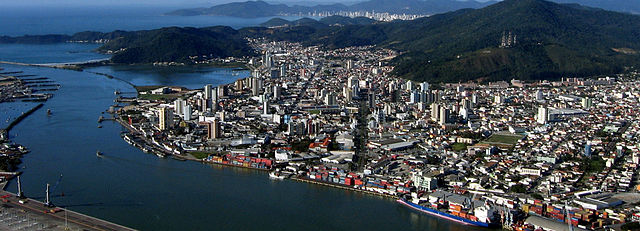
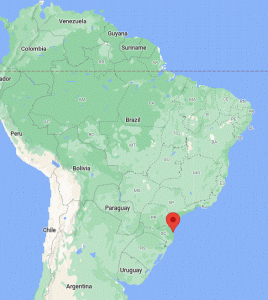

 In the UK they’re being told they might have to avoid using appliances at home from 2pm-8pm this winter and cook dinner after that (your circadian rhythm be damned). Who wants to tuck the kids in without a hot meal? Energy prices are so high pubs are already closing early. Nearly one in four households in the UK say they are
In the UK they’re being told they might have to avoid using appliances at home from 2pm-8pm this winter and cook dinner after that (your circadian rhythm be damned). Who wants to tuck the kids in without a hot meal? Energy prices are so high pubs are already closing early. Nearly one in four households in the UK say they are 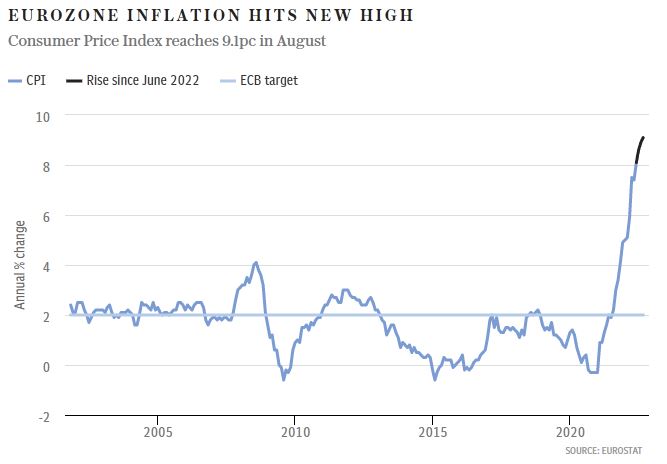











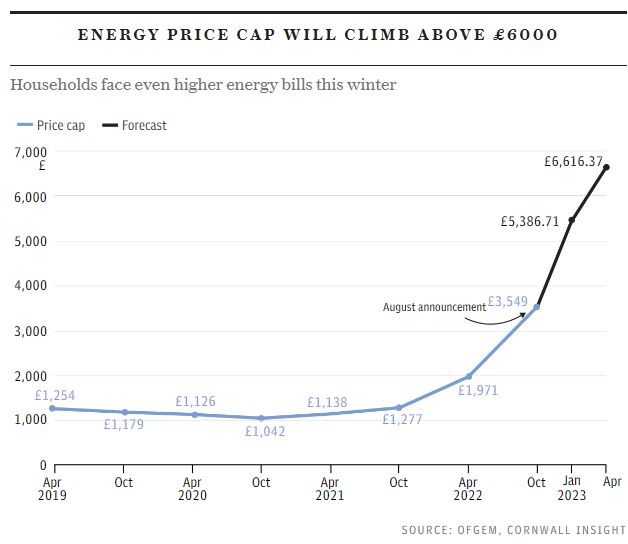











Recent Comments